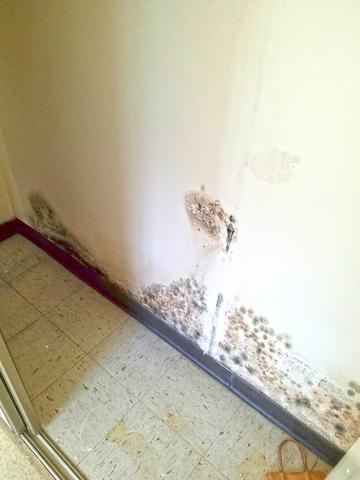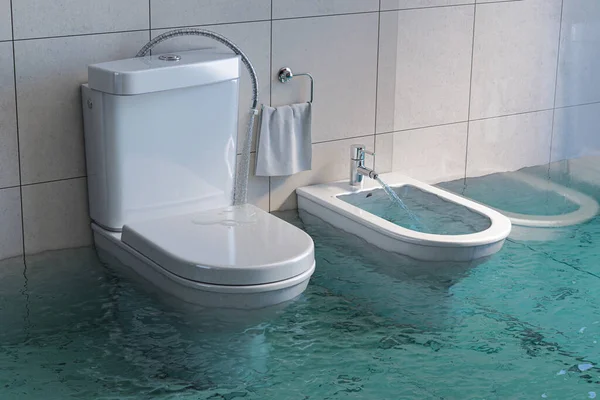They are making a few good pointers about How to Repair and Prevent Bathroom Water Damage? as a whole in this post below.

Water damage often takes place in the shower room because of the water made use of day-to-day. Often, the damage could be a little mold and mildew from the shower. Other times, it's substantial damage on your flooring. Whatever it is, it is constantly good to recognize the reason and stop it before it happens.
This overview will go through a few of the usual root causes of water damage in the restroom. We will certainly also examine what you can do to avoid these reasons from damaging your restroom. Allow's dive in.
5 Usual Causes of Water Damage in Washrooms
These are the typical factors you would certainly have water damage in your washrooms and how you can find them:
Burst or Leaking Pipes
There are several pipelines bring water to various parts of your washroom. Some pipelines take water to the bathroom, the sink, the taps, the shower, as well as lots of various other areas. They crisscross the tiny location of the shower room.
Once in a while, these pipelines might get corroded as well as burst. Other times, human action can cause them to leakage. When this happens, you'll locate water in the edges of your restroom or on the wall.
To detect this, watch out for bubbling wall surfaces, molds, or mold. Call a professional emergency situation plumbing technician to repair this when it occurs.
Splits in your wall floor tilesv
Restroom wall surface floor tiles have been specially made for that purpose. They safeguard the wall surface from dampness from individuals taking showers. However, they are not unbreakable.
Often, your washroom wall surface tiles split as well as allow some moisture to permeate into the wall surface. This can possibly damage the wall surface if you don't take any kind of activity. If you observe a split on your wall ceramic tiles, fix it promptly. Do not wait until it destroys your wall surface.
Overruning bathrooms and sinks
As human beings, occasionally we make errors that might trigger some water damage in the bathroom. As an example, leaving your sink tap on can trigger overruning as well as damages to various other parts of the shower room with moisture.
Likewise, a faulty commode could trigger overruning. For example, a busted toilet manage or various other parts of the cistern. When this occurs, it might harm the flooring.
As quickly as you see an overflowing sink or bathroom, call a plumber to help handle it promptly.
Roof covering Leaks
In some cases, the issue of water damage to the shower room may not come from the shower room. For example, a roof covering leakage can cause damage to the shower room ceiling. You can spot the damage done by considering the water stains on the ceiling.
If you discover water spots on your ceiling, inspect the roof covering to see if it's harmed. After that, call a specialist to aid solve the problem.
Excess Dampness
It's trendy to have that long shower and sprinkle water while you dance around and act like you're performing, however often these acts can trigger water damage to your bathroom.
Spraying water around can cause water to visit edges as well as create mold and mildews. View exactly how you spread out excess moisture around, as well as when you do it, clean it up to avoid damages.
Conclusion
Water damage to your restroom can be annoying. However, you can handle it if you stop a few of the reasons discussed in this guide. Call an expert emergency plumbing professional if you see any kind of extreme damages.
How to Repair a Water-Damaged Wall in the Bathroom
All you need to know to repair bathroom wall water damage – from identifying the water source to finishing the repair professionally. If you don’t act quickly to resolve a water damage problem, you could find that it develops into a mold issue and/or cause structural damage to your home. Follow this guide to repair your bathroom before it's too late.
All you need to know to repair bathroom wall water damage
Water damage is a common household problem, and one that, if left unrepaired, can quickly lead to structural problems and health issues. The two most likely rooms where water damage may occur is the bathroom and the kitchen – where water is used often and there is high humidity.
What is water damage?
It is easy to think of water damage as caused by a flood or leaking tap or burst water pipe. However, when water damage is assessed, there are three main categories into which water falls (as classified by the American National Standards Institute). These categories are defined as:
Category 1 Water – ‘Clear Water’
This is sanitary water. There is usually no major threat to health by washing with this water, drinking it, or inhaling if it is streaming. Most water that enters your home will be category 1 water, while most water leaving your home will be either category 2 or 3 water. It may also come from melting snow, rainwater and water tanks.
Damage caused by this type of water can usually be repaired or restored, though this doesn’t mean that there are no potential health issues.
Category 2 Water – ‘Grey Water’
This is contaminated water – sometimes considerably so – and will cause illness if consumed or if it comes into contact with your skin. Water damage in this category is often caused by overflows from toilet bowls, and damage to washing machines and dishwashers. While damaged items might still be repaired or restored after damage by grey water, it is more difficult and more expensive to do so.
If the water damage in your home has been caused by grey water, it is advisable to have repairs made by professionals.
Over time, grey water will deteriorate and become black water.
Category 3 Water – ‘Black Water’
Category 3 water, also known as black water, is highly contaminated and a great risk to health. This may contain raw sewage, heavy metals, and other toxic substances. It will smell terrible.
If this is the water that has caused damage in your bathroom, do not touch it. Stop the water flowing if possible, seal the room and call the experts: it really isn’t worth the risk of ill health and disease that could be fatal. It is very unlikely that items can be repaired or restored if they have been damaged by black water.
https://www.porterscleaning.com/blog/how-to-repair-a-water-damaged-wall-in-the-bathroom/

How to Repair a Water-Damaged Wall in the Bathroom
All you need to know to repair bathroom wall water damage – from identifying the water source to finishing the repair professionally. If you don’t act quickly to resolve a water damage problem, you could find that it develops into a mold issue and/or cause structural damage to your home. Follow this guide to repair your bathroom before it's too late.
All you need to know to repair bathroom wall water damage
Water damage is a common household problem, and one that, if left unrepaired, can quickly lead to structural problems and health issues. The two most likely rooms where water damage may occur is the bathroom and the kitchen – where water is used often and there is high humidity.
What is water damage?
It is easy to think of water damage as caused by a flood or leaking tap or burst water pipe. However, when water damage is assessed, there are three main categories into which water falls (as classified by the American National Standards Institute). These categories are defined as:
Category 1 Water – ‘Clear Water’
This is sanitary water. There is usually no major threat to health by washing with this water, drinking it, or inhaling if it is streaming. Most water that enters your home will be category 1 water, while most water leaving your home will be either category 2 or 3 water. It may also come from melting snow, rainwater and water tanks.
Damage caused by this type of water can usually be repaired or restored, though this doesn’t mean that there are no potential health issues.
Category 2 Water – ‘Grey Water’
This is contaminated water – sometimes considerably so – and will cause illness if consumed or if it comes into contact with your skin. Water damage in this category is often caused by overflows from toilet bowls, and damage to washing machines and dishwashers. While damaged items might still be repaired or restored after damage by grey water, it is more difficult and more expensive to do so.
If the water damage in your home has been caused by grey water, it is advisable to have repairs made by professionals.
Over time, grey water will deteriorate and become black water.
Category 3 Water – ‘Black Water’
Category 3 water, also known as black water, is highly contaminated and a great risk to health. This may contain raw sewage, heavy metals, and other toxic substances. It will smell terrible.
If this is the water that has caused damage in your bathroom, do not touch it. Stop the water flowing if possible, seal the room and call the experts: it really isn’t worth the risk of ill health and disease that could be fatal. It is very unlikely that items can be repaired or restored if they have been damaged by black water.
https://www.porterscleaning.com/blog/how-to-repair-a-water-damaged-wall-in-the-bathroom/
Do you appreciate reading up on How to Repair and Prevent Bathroom Water Damage?? Create a review below. We will be interested to find out your opinion about this blog posting. In hopes to see you back again in the future. Remember to take a moment to promote this blog posting if you enjoyed it. Thanks so much for taking the time to read it.
Always here, call!